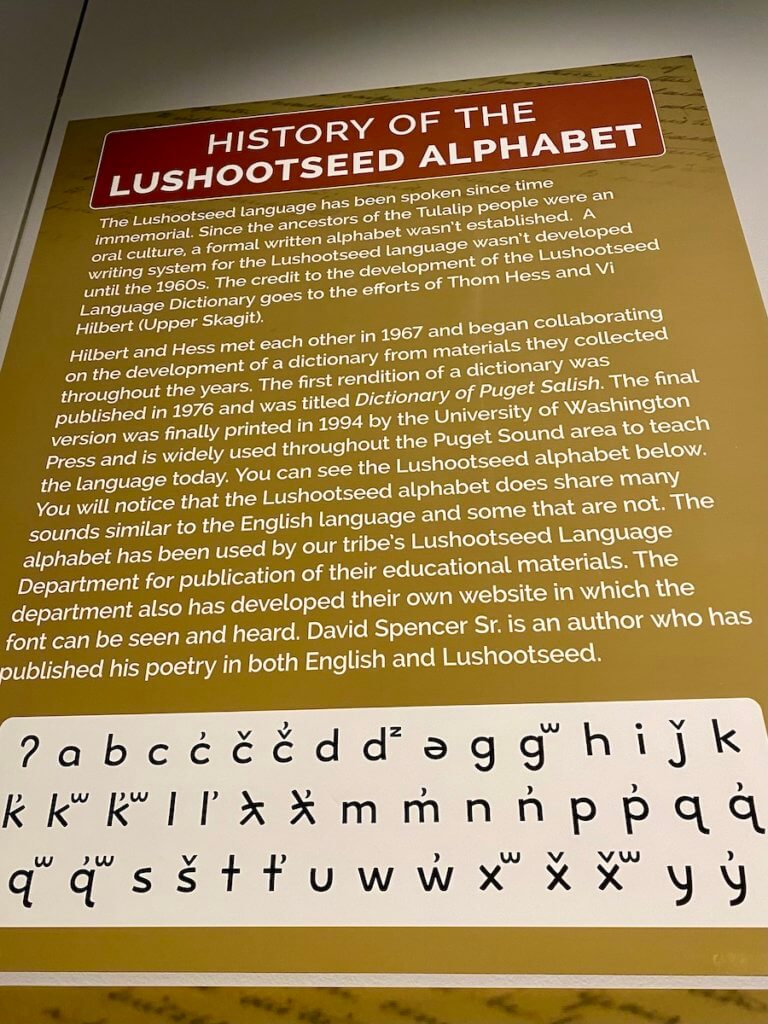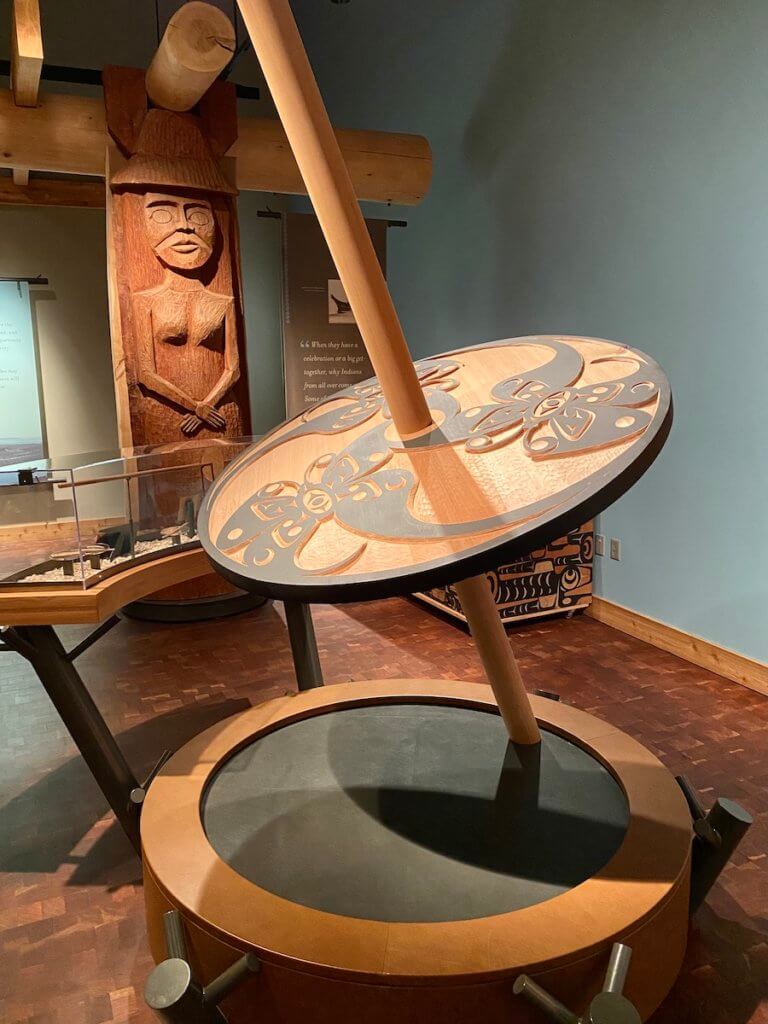
About 12,000 years ago, the last great glacier smothering Western Washington crawled through the path of least resistance, leaving behind the rolling islands and deep waters comprising the Salish Sea. Since then, people have lived in this part of the world, basking in the beauty and bounty of the land.
Over time, tribal structures developed and the Coast Salish People emerged as the indigenous group living in and around the Salish Sea, which includes all of present-day Puget Sound, Western Washington to the mouth of the Columbia River, northern parts of Vancouver Island, the Strait of Georgia, and Southwestern British Columbia. The Coast Salish People include different cultures, language families, and nuances of artwork styles.
(From the Burke Museum website)
It’s believed that the first contact with Europeans occurred in the late 18th Century. The colonialism in the time since then perniciously worked to eradicate Native existence. Despite much strife and tribulation, the Coast Salish People are still here today. This article’s intent is to offer respectful ways for non-Native people to acknowledge and better understand the indigenous cultures around present-day Seattle.
Although I was born and raised in the Pacific Northwest, I entered adulthood without much real knowledge of Native history post-European contact. In school, we learned about indigenous cultures but then the information mysteriously seemed to stop around the 1850s.
Unlike learning about an atrocity that took place halfway around the world, embracing the local Native history where I live can be uncomfortable for a white guy like me. The story about the land literally beneath me as I type this article hits close to home. And it’s even more reason to work harder to learn and acknowledge the land and the people who have lived here since time immemorial.
Throughout my PNW travels, I’ve found a number of places that helped expand my learning about the Coast Salish People, and I want to share them with you. My journey is not finished, this is not an exhaustive list, nor am I trying to tell Native people about their own cultures. For more specific information, I suggest taking a look at the particular links to various tribal websites within the copy of this article.
Learning about the Coast Salish People — museums, art and shops around the Seattle area
- Duwamish Longhouse & Cultural Center
- Daybreak Star Indian Cultural Center
- Hibulb Cultural Center
- Swinomish Cedar Hats
- Suqaumish Museum
- Heronswood Garden
- the čičməhán trail
- Jamestown S’Klallam Art Gallery & Library
- Burke Museum
- Interactive Map
Duwamish Longhouse & Cultural Center
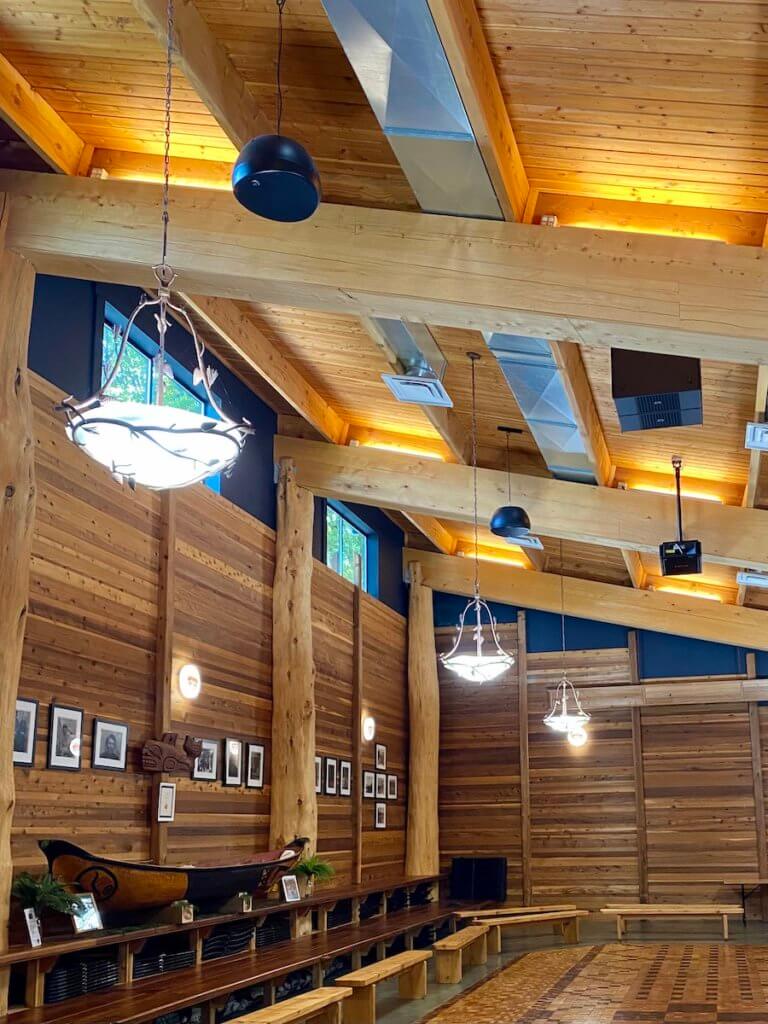
The Duwamish Tribe of Indians (dxʷdəwʔabš) or “The People of the Inside”, are the host Tribe of Seattle and King County. The Duwamish Longhouse & Cultural Center houses a bookstore-style gift shop with a number of interesting museum-like features. The beautiful Longhouse is the hub for a variety of activities, both public and private. More information can be found on the website.
To learn about the namesake of Seattle, Chief Si’ahl, please look at the Duwamish website section on Chief Si’ahl.
Daybreak Star Indian Cultural Center
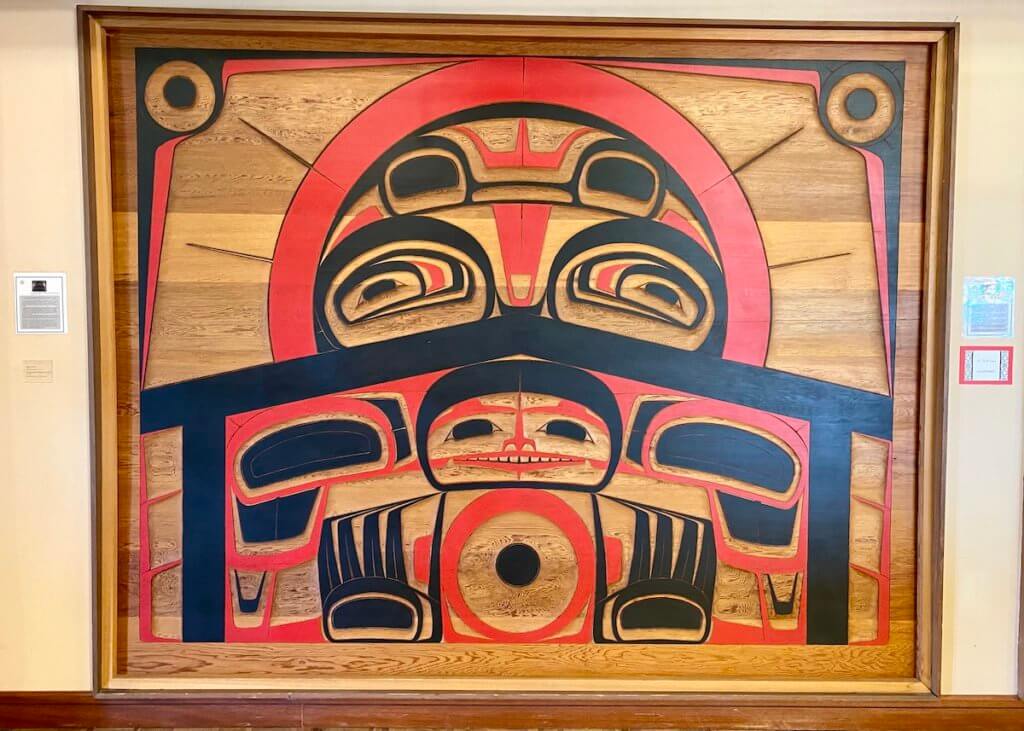
According to their website,
“Daybreak Star Indian Cultural Center is a land base and community center for Native Americans in the Seattle area, and United Indians’ headquarters. It is located on 20 acres in Discovery Park in Seattle’s Magnolia neighborhood.”
Peruse their website to learn more about the Native American activism that successfully helped establish the Center in 1970, after 70 years of being part of the US Department of Defense (formerly Fort Lawton).
In addition to the meeting and event space, housed under the beautiful architectural lines, the Center has a permanent collection of Native art, a gift shop, and visiting exhibits in the Sacred Circle Gallery.
Hibulb Cultural Center & Natural History Preserve
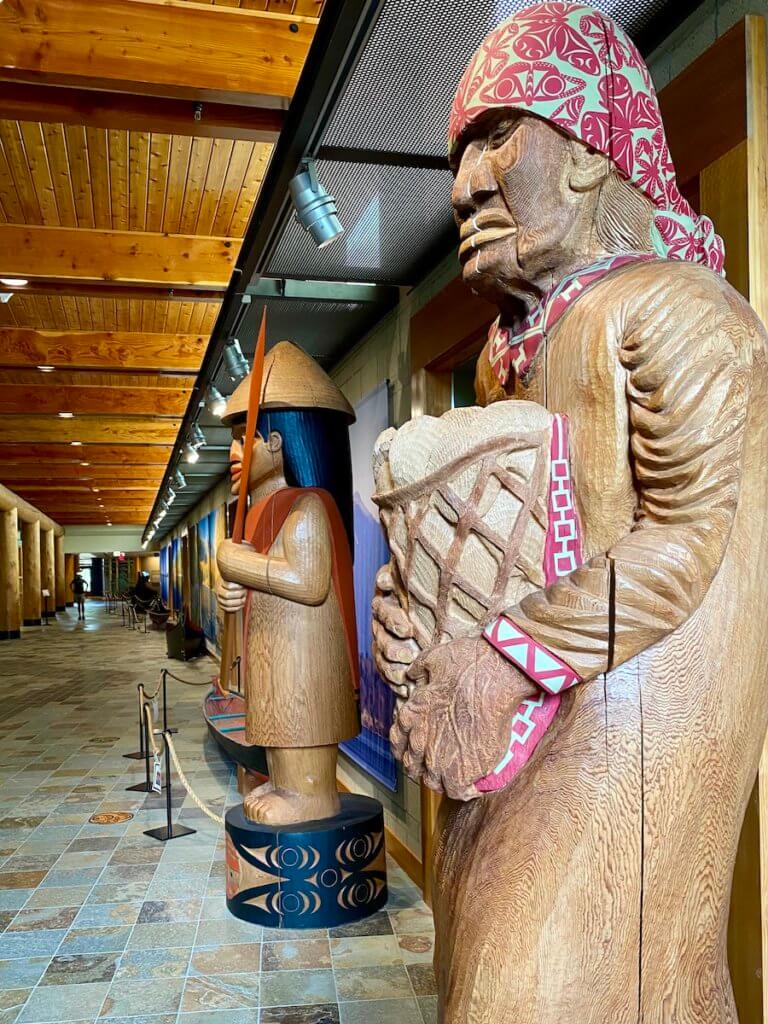
The watershed 1855 Point Elliott Treaty, signed near present-day Mukilteo, Washington, drastically reduced Salish tribal lands. It was negotiated using about 300 Chinook Jargon words — which made nuances unclear to many of the signatories, who mostly spoke versions of Lushootseed.
The Snohomish, Skykomish, Snoqualmie, and other ally tribes were combined into the area that now makes up the Tulalip Indian Reservation — just north of Everett, Washington near Marysville. Today, the Tulalip Tribes of Washington own and manage a variety of operations centering around Quil Ceda, Washington, which include the Hibulb Cultural Center and Natural History Preserve (photo shown above).
With the motto “So we can remember,” the living museum offers an important perspective, from the Native point of view. The exhibits are well-curated and great for visitors of all ages. Start in the simulated longhouse for an overview film and then work through the main part of the museum. The conversation feels engaging, rich with detail, and amazingly comprehensive.
At the time of this writing (August 2021) adult admission is $10, elders $7, and students and military $6. The museum is closed on Mondays and open until 5 PM the rest of the week.
Swinomish Cedar Hats & Pacific Blanket Trading Post
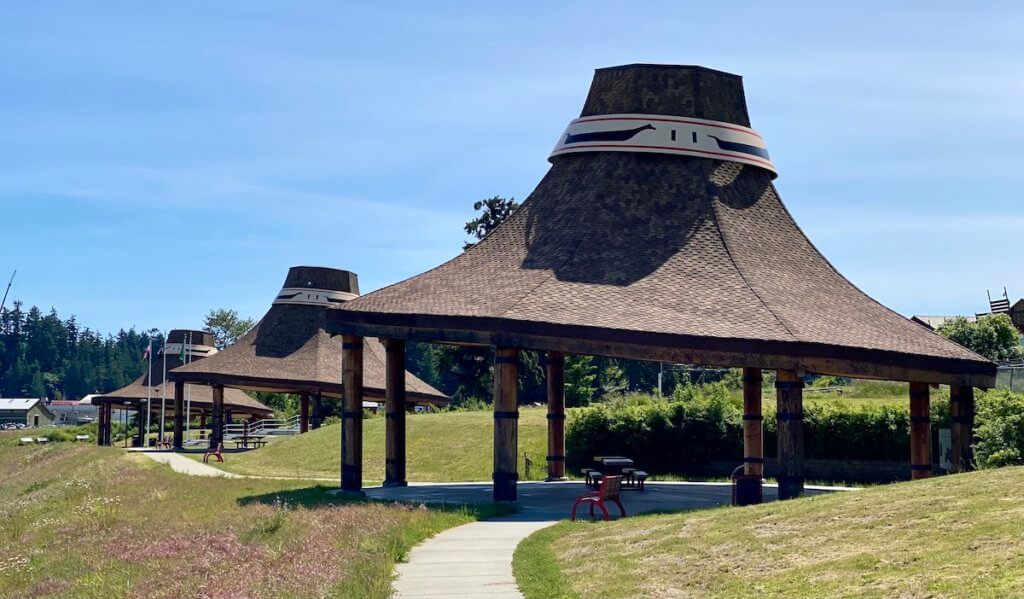
Salmon is the backbone of tribal life throughout the Pacific Northwest, including the local Swinomish Tribe whose name literally means “Salmon People”. To honor this pink-hued fish, the commanding erector-set like Rainbow Bridge made its debut in 1957 — connecting the town of La Conner, Washington with the Swinomish Village.
While the town of La Conner inhabits the east side of the Swinomish Channel, the Swinomish Village, part of the federally recognized Swinomish Indian Reservation, sits along the west bank of the water, encompassing 15 square miles including a golf course, a casino, and a fishery company. A place to get started learning more about the Swinomish Tribe is this article about the 10 things you should know about the Swinomish Tribe.
Near the Village, the Swinomish Cedar Hats series of pavilions, and the affiliated interpretive panels and native-plant garden, is an interesting place to stroll. This space was created for the Canoe Journey event in 2011 and now serves as a venue for gatherings, including subsequent Canoe Journeys in the adjacent Swinomish Channel.
If you’d like to support a Native American-owned business, head about 6 miles north of the Swinomish Village area, along Highway 20, to the colorful Pacific Blanket Trading Post. They sell a variety of textiles, including blankets, and other locally sourced artwork and products.
Suquamish Museum & Chief Seattle’s gravesite
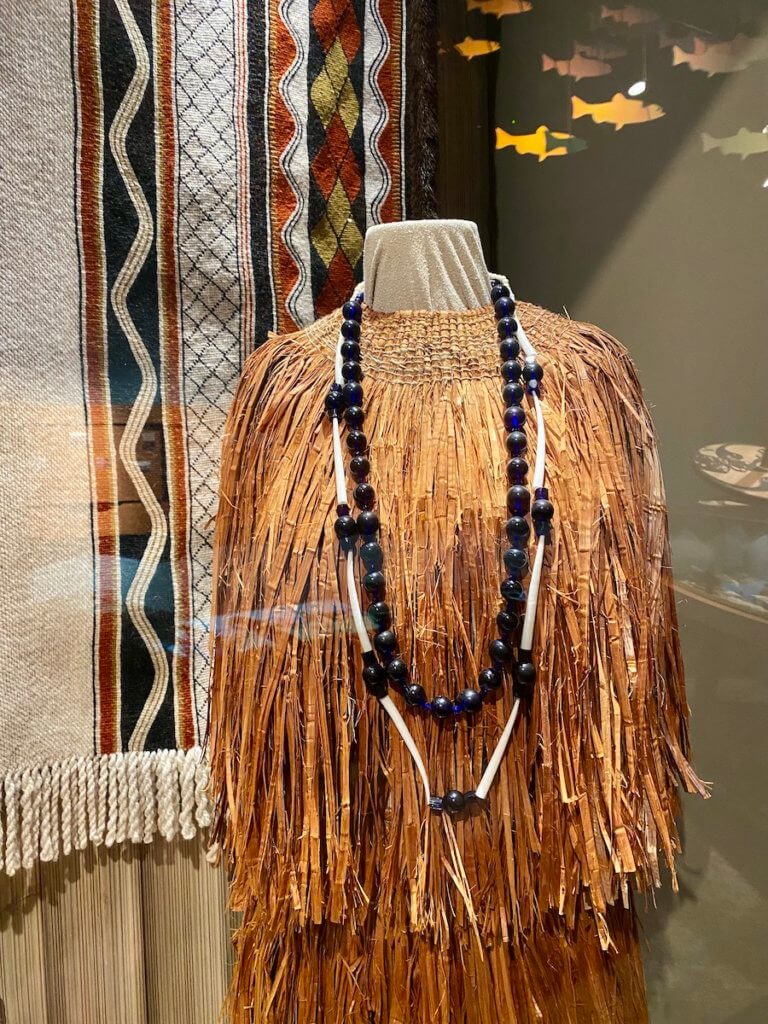
The Suquamish Tribe website offers this introduction:
“dxwsəq’wəb, meaning place of the clear salt water in the Southern Lushootseed language has been the primary home of the Suquamish people since time immemorial. It is the ancient place on Agate Passage, the site of Old-Man-House Village, the winter home of Chief Seattle, and the heart of the Suquamish people. It is here-past, present, and future that the Suquamish people live on the land of our ancestors and our great-grandchildren.”
The Suquamish Museum is housed in a modern-looking building that resembles a great longhouse inside. The main exhibit offers an in-depth timeline of events which is really helpful in order to learn about the history of Coast Salish tribes and, in particular, that of the Suquamish people. Visiting hours are 10 AM — 5 PM daily and admission ranges from $3-$5 for children, adults, and elders (families $15).
Learn about Chief Seattle and his heroic work leading his people through unprecedented change and challenge. Just up the road, you can visit the cemetery that hosts Chief Seattle’s final resting place.
Heronswood Garden
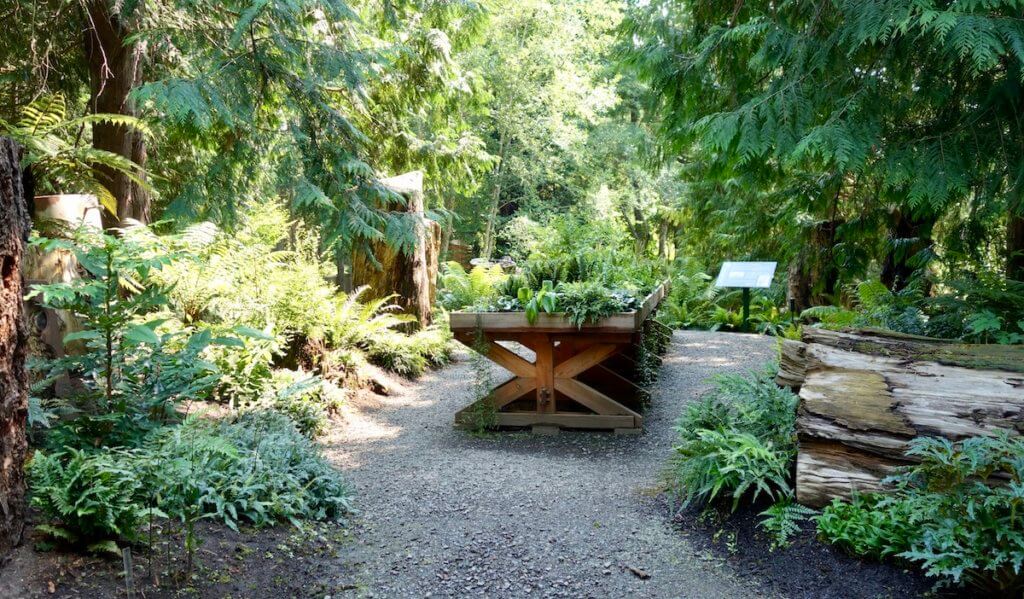
About 9 miles from the Suquamish Museum, you’ll cross an arterial roadway and come upon stunning Heronswood Garden. It is also located just minutes away from the Kingston Ferry Terminal, with regular service to Edmonds, Washington.
The Port Gamble S’Klallam Tribe owns and operates this elegant garden, effortlessly flowing with native favorites that fold in more exotic species from across the globe. (Normal operating hours: Wednesday through Sunday, 10:00 AM to 3:00 PM — closed in the deep winter. The admission is $10 for adults, $5 for children ages 7-17.
Step into the recently expanded exquisite fern garden and notice the innovative fern table display amongst a wooded area. The Pacific Northwest garden is the next zone of discovery, and it is very well done with a variety of paths giving options to explore the thickets of vegetation. No matter the time of year, this area surprises and delights with erupting textures and colors. Finally, don’t forget to visit the show-stopping formal garden, complete with stone pathways that lead to quirky fountains framed in by profuse flairs of colors that vary from reds and oranges to the muted flow of lavender and sage.
For more information on the Port Gamble S’Klallam Tribe visit their website.
The čičməhán trail (cheech-ma-han)
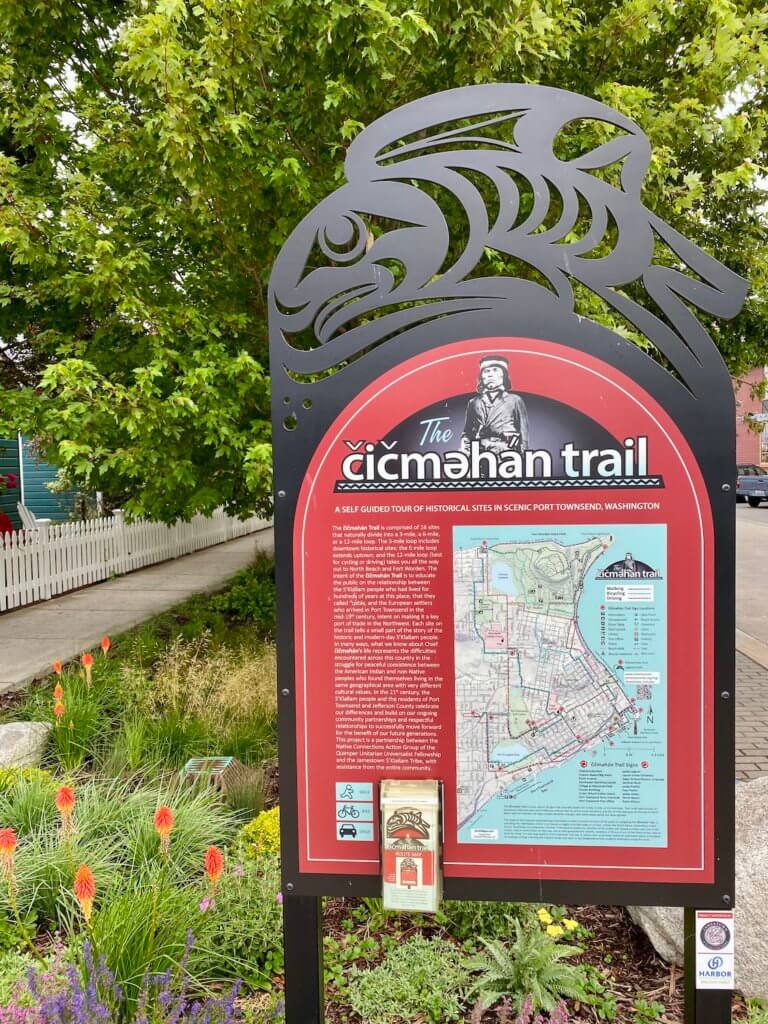
S’Klallam means “strong people”. The Jamestown S’Klallam Tribe is one of the three bands that primarily lived in the area around present-day Port Townsend for time immemorial, including the era of the first contact with European explorers.
The abundance of age-old cedar and fir, as well as a rich salmon and shellfish bounty from the sea, encouraged new settlers to take up residence adjacent to (or on top of) established villages. Traditional homes were burned and native people were displaced. The S’Klallam Tribe entered into the Point No Point Treaty with the United States in 1855, however, it would take almost 150 years for the Jamestown S’Klallam Tribe to gain official federal recognition — which came in 1981.
The transitional years around the Treaty were filled with strife, and čičməhán, (anglicized to ‘Chetzemoka’), provided leadership, working to help bridge the harbor-sized gap between native culture and that of the new settlers.
Recently an educational trail throughout the city was completed, highlighting 18 stops significant to local Native history — looping from Downtown Port Townsend around to Fort Worden. I recommend purchasing the čičməhán trail booklet — which provides additional information to the featured trail signs — sold in the Maritime Center. It is $10 and proceeds go to the Jamestown S’Klallam tribe. The Maritime Center also makes for a great place to start the trail.
The 12-mile trail is meant for walking or biking, but there is a driving route for those with more limited mobility. Three and six-mile versions of the trail also exist. Each stop features a trail sign providing important, often overlooked, perspectives on local history.The Jamestown S’Klallam Tribe welcomes investigation into more information and has quite a resource of reading materials on their website, library.jamestowntribe.org.
Jamestown S’Klallam Art Gallery & Library

It’s hard to miss this enclave of buildings on the horseshoe turn in Highway 101, just outside Sequim, Washington.
“In 1874, under the leadership of Tribal citizen Lord James Balch, they pooled $500 in gold coins and purchased the 210-acres along the Strait of Juan de Fuca, now called Jamestown. This provided a geographical center for group identity and independence, and was the start of the Jamestown S’Klallam community.”
Jamestown S’Klallam Tribe website
On my way to the Olympic Peninsula, I like to make a stop here — usually in the parking area near the Community Center. The Art Gallery is a great place to look at Coast Salish artwork and find other gift shop items to purchase. It’s interesting to wander around a bit and survey the number of large totems. Usually, the Tribal Library (also mentioned above) is a great place to access more information, but the physical location will be closed for another year to facilitate a large expansion.
If you’re just passing through and want to support the Tribe, consider stopping at the Longhouse Market & Deli. This is part of the Chevron gas station and provides an excellent market experience. For more information, visit the Jamestown S’Klallam Tribe website.
Burke Museum

While the Burke Museum, on the campus of the University of Washington, is not Native-owned, they have a substantial collection of Northwest Native Art. The public exhibits tend to emphasize artistic customs and one section features modern-day Native artists creating in longstanding traditions. The museum is open Tuesday – Sunday 10 AM – 5 PM. Admission is $22 for adults, $20 for elders, and $14 for students and youth.
“The Burke Museum is the Washington state museum responsible for maintaining state collections of natural history and cultural heritage. Relationships maintained between communities and the Burke Museum preserve the ingenuity, creativity, science, and complex knowledge of natural and cultural resources.”
“Tribes and community members are the experts in these areas, and we are the caretakers. Changing these patterns of cultural dominance means actively involving communities in every aspect of our work. The Burke recognizes our colonial legacy, and we dedicate ourselves to learning from communities and building a more ethical and collaborative future together.”
“The Burke Museum helps tribal museums and cultural centers, including the Duwamish Longhouse and Cultural Center, Hibulb Cultural Center and Nature Preserve, and the Suquamish Museum and Cultural Center. Activities include long-term loan of objects for display; conservation, preservation, collections management; and training for museum/center staff.”
Burke Museum website
